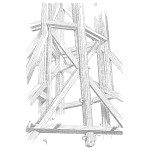
Guest Post by James Kline (first posted on CERM ® RISK INSIGHTS – reposted here with permission)
In February 2021, the Organization for Economic Cooperation and Development (OECD) published an Enterprise Risk Management Maturity Model. This model is designed for Tax Administration Agencies. It is the culmination of work that began in 2018. This work was designed to develop stand-alone maturity models for a broad range of organizational activities. One of which was Enterprise Risk Management. This piece examines this model and discusses how such models are being used by government elsewhere.
[Read more…]











 Ask a question or send along a comment.
Please login to view and use the contact form.
Ask a question or send along a comment.
Please login to view and use the contact form.